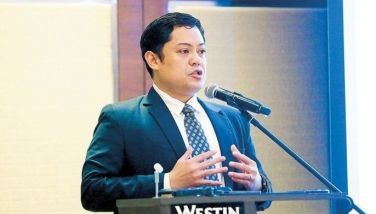Nov. 1 thoughts: Economics and social practices on the end of life

The recurring images of Nov. 1 – All Saints’ Day in Christian Philippines – are of people trooping to the cemeteries to remember and honor their dead.
As in years past, this day required well-choreographed moves by the national and local authorities to assure the homage and remembrance went well as expected across the nation.
Income and wealth inequality. The most striking observation a Martian visiting our cemeteries could make is the stark difference in the income and wealth among the deceased. In life as in death, the rich try to be different from the rest among us.
This is most evident in the older cemeteries where the burial plots include the rich and poor. There, mausoleums and enclosed family plots are distinguished and set apart from areas designed for common burials.
The same can be observed even in the memorial parks designed only for the rich where lot prices are so expensive the poor are automatically excluded. The differences in size, architecture, and materials used for mausoleums of the rich astonishingly differ as well.
Another observation could be a hint of the rise and fall of fortunes of families. For instance, the old La Loma Catholic Cemetery in the northern part of Manila used to be among the premier cemeteries in earlier days.
There, the sight of many uncared for mausoleums and tombs is depressing. Yet this hint of abandonment could only mean any one of the following: the families have migrated to other places; generational changes and marriages have blurred the lines of identity; or the families had met a fall in fortunes.
A changing scenario? This year I noticed the traffic of people to the cemeteries was less crowded than in previous years.
I wondered whether this was a new pattern or an aberration. Is there a changing landscape as far as this holiday observation is concerned?
The weather forecast for the day might have had something to do with it, but rains had gone and interfered before. The expansion of private cemeteries and “columbariums” might partly explain this change. Or it could have been the freak result of a government announcement the next day would be a working day.
Perhaps, changing practices as to burial or other means have taken some foothold. If so, what can further explain this? The shopping malls were open and they become places of alternative social gatherings and activities especially on holidays. There is also the exodus of people to vacation places – at home and abroad.
How else can we explain the brisk business in some eateries outside in the shopping malls and in eatery rows on this day? Holidays – even on the most holy of holidays – often suffer leakage into fun, vacation and other socials.
Cost of end of life. The cost of birth is much less than the cost of the end of life. That’s why people save for important events in life, and it also partly explains why people take up insurance and accumulate savings.
Such efforts are designed to reduce the pain of financial burden upon death’s occurrence on the descendants who are left behind. The cost of a long illness could be excruciatingly high and overwhelming on a family.
In addition, the emotional toll on family could be deeply draining. The end of life could bring about deep sorrow. It is often so unlike the elevating and positive feelings we get out from celebrations of births, weddings, graduations, and milestone birthdays.
The economic costs could lead to the decimation of income flows and hence a change in the future economic opportunities facing the immediate family. This is especially true if the death cuts short the support from the major earner in the family.
The accumulated wealth of the deceased is also broken up, a consequence of social law on inheritance which requires the filing of tax to settle the estate. The formal partition of the remaining assets supplements or aggravates the change in economic circumstances.
Death is not a choice for the living, but is often an event forced upon the person by fate. Yet, while alive, the living could express a wish through instructions and legal wills and testaments.
Choice: burial vs. cremation. In the last two months, I have witnessed two deaths in the family and two distinct ways of dealing with the mortal remains. For each unique case, the decision was made by the deceased prior to his demise or by the descendants. Religion, of course, is the anchor on which the decisions are made.
In general, all ceremonies of death are reverential in nature, whether burial or cremation is chosen. Both processes generally involve ceremonies that show endearment and respect for the mortal remains.
Burial is the traditional method, well-known to all.
Cremation is the process of reducing a body to bone fragments through the application of intense heat. The bone fragments are then pulverized, placed in a container and returned to the family. The cremation, under the most modern technology, takes about two hours.
Today, cremation is recognized by the Catholic Church although it still expresses preference for burial. The Catechism of the Catholic Church singles out cremation with the following notation (No. 2301): ‘The Church permits cremation, provided that it does not demonstrate a denial of faith in the resurrection of the body.’
The price of cremation is highly differentiated, with certain houses offering varying classes of service. The cheapest is probably offered by the La Loma Cemetery and Crematorium, last recently listed as P16,000, with P12,800 for senior citizens discount. The city of Manila has offered free cremation for the poorest residents under the program of a former mayor.
The St. Peter Life plans – a pre-need financial company – quotes prices for two different classes of service for cremation. Spot cash range for the inexpensive is P51,750 and P74,250 for the higher class of service. Under these prices, the cost of burial could be much more expensive, because a larger piece of land is needed for burial.
Caskets for the rich can lead to high six figure numbers alone! In life as in death, the issue of income and wealth inequality comes out starkly in the choice even between cremation and burial.
My email is: [email protected]. Visit this site for more information, feedback and commentary: http://econ.upd.edu.ph/gpsicat/
- Latest
- Trending





























